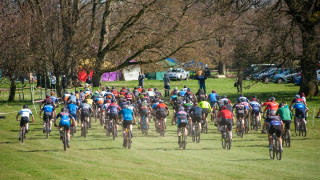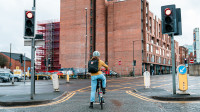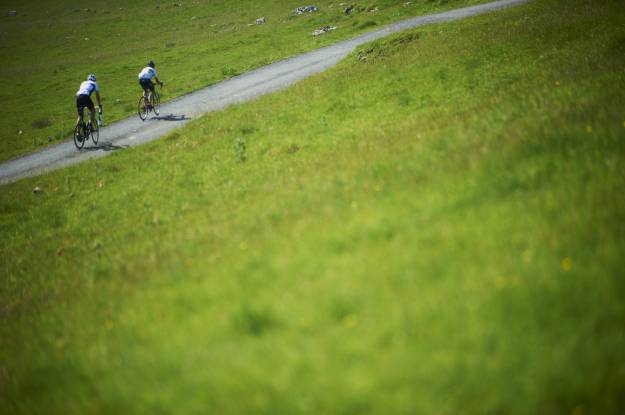Knowledge Level: Intermediate
No matter how strong your legs, how finely tuned your heart and lungs or how expensive and lightweight your bike, if your backside starts to hurt, both your ride enjoyment and average speed can plummet. You’ll constantly be shifting around and trying to find a comfier position rather than focussing 100% on your riding.
Soreness and discomfort can easily ruin a ride but, if you develop actual sores, you could be off the bike for a significant amount of time.
Causes
As the name suggests, saddle soreness is a pain or discomfort felt in the areas of your body in contact with the saddle. These can be your 'sit-bones' or, in the case of more aggressive riding positions, the area between your anus and genitals known as the perineum. It’s also possible to suffer from chafing of your inner thighs as they rub back and forth against the saddle.
A certain amount of soreness and even temporary redness and inflammation is inevitable with long days in the saddle but significant pain that is negatively effecting your ability to ride should be acted on immediately.
The classic saddle sore is either an infected hair follicle, known as folliculitis or a boil, known as a furuncle. Infected follicles tend to cause fairly small sores that clear up quickly but untreated boils can quickly reach terrifying proportions and should be seen by a medical professional as they often require antibiotic therapy.
A combination of pressure from your bodyweight bearing down on the saddle, friction from the constant pedalling motion, moisture from sweat, an increase in temperature and reduced blood flow can produce a perfect storm for discomfort and the formation of sores.
Prevention
There are a number of steps you can take to reduce discomfort and prevent the formation of sores.
Fit
It’s essential that your bike is well fitted. Incorrect saddle height and handlebar height/reach can cause your weight to be poorly distributed or lead to excessive rocking in the saddle both of which can contribute to discomfort. Leg length discrepancies are another common cause of saddle soreness and should be picked up by a professional bike fit. Here is some fitting advice from Todd Carver of Rëtul.
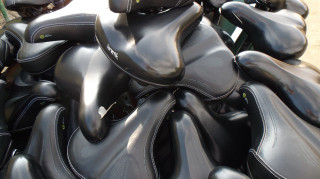
Image provided by Oatsy40 under Creative Commons licensing.
Saddle Choice
Every backside is different but there is a saddle out there to suit you. Don’t be fooled into thinking that big and padded is best, sometimes ultra-light thin saddles can be the most comfortable perch for you. Don’t be afraid to experiment with some of the more outlandish saddle designs as cut-outs, twin noses and channels can all help to alleviate pressure but remember that any displaced pressure will have to be carried elsewhere.
A good bike shop will allow you to sit on a number of saddles and might even have a jig for this purpose to help you to find the best one for you. Also, with time, your saddle will “break-in” and mould to you slightly.
Shorts
Don’t buy cheap cycling shorts. Budget shorts are a guaranteed route to a sore behind. You may pay more for the recognised and respected manufacturers but the quality of the pad and the improved comfort it’ll deliver will definitely pay back your investment. As with saddles, different pads suit different riders so, once you find one that works for you, stick with it.
Consider bib shorts as they will stay in position far better when riding. Finally, never wear additional underwear, especially cotton. It will hold additional moisture and make soreness, skin irritation and infections more likely.
Emollient/Chamois Cream
You apply chamois cream directly to the pad in your shorts and to your perineum before riding and, although it might initially feel a little strange and squishy, its effectiveness in preventing saddle soreness is almost miraculous. It reduces friction, hydrates the skin and prevents cracking. Some brands also have antibacterial properties but be prepared for a bit of a tingle!
Build-up slowly
Like all aspects of cycling training, you have to build-up slowly and allow your body to adapt. There’s no doubt that your undercarriage does get used to time in the saddle but you can’t rush it. Novice riders tend to sit fairly heavily on their saddles and, because of this, typically bounce more in the saddle.
More experienced and stronger riders will put more weight and power through their pedals and will typically have a more stable position on the saddle. Following a structured training plan that allows you to develop both fitness and technique slowly and taking note of all these tips will make your riding as pain free as possible.
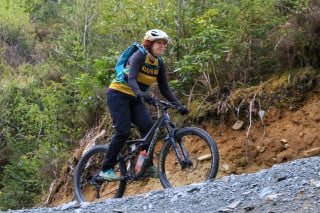
Stand up
Even on flat rides, try to stand up out of your saddle every 10-15 minutes to give your backside a bit of a break and to restore some blood flow.
Keep clean
Furuncles and folliculitis thrive in dirty and damp surroundings. Always wear clean shorts for every ride and avoid sitting around in dirty and damp shorts once you finished. If you’re on a multi-day trip, make sure you pack enough shorts or some travel wash. Many top riders will use an antibacterial soap in the shower after riding to thoroughly clean the saddle contact area.
Anatomical issues
Along with the issues already covered, there are more serious and gender specific conditions that can arise from an ill suited saddle or poor position.
Male
Compression of the dorsal penile nerve can produce a sensation of penile numbness. This should alleviate immediately when you shift position, stand out of the saddle or finish your ride. If it lingers, it should be taken extremely seriously as it can be symptomatic of the development of erectile dysfunction.
Excessive pressure can also damage and lead to infections of the urethra. This is characterised by burning or stinging when going to the toilet after a ride or, in severe cases, blood in the urine. Both of these symptoms should be acted on immediately and medical advice sought. Saddles with central cut-outs can help to alleviate both of these conditions.
Female
Urethral compression, damage and infection, characterised by pain when urinating and blood in the urine, is also an issue for female riders. With wider hips and a profoundly different pelvic anatomy though, the saddle demands of female riders are very different to men.
Many cut-out designs are marketed as female specific but in reality are just modified male designs. Trauma and inflammation of the labial tissues is a fairly common issue in female riders. Many cut-out saddle designs will alleviate pressure on the inner labia but then transfer it to the outer labia instead.
If left, the inflammation and swelling can become serious, make the area more prone to further damage and, due to adopting unusual positions on the saddle to try to alleviate the discomfort, can lead to secondary injuries to the back or knees.
Tale of a saddle
During the build up to the London 2012 Olympics, the coaching and support staff identified the saddle as a main area of interest as saddle discomfort was an issue for many of the squad. The search for marginal gains in all areas resulted in highly aggressive and aerodynamic positions where bodyweight distribution became acute, with soreness, discomfort and injury being real concerns. Over time however British Cycling and UK Sport developed a custom solution that delivered a huge improvement for many members of the team.


